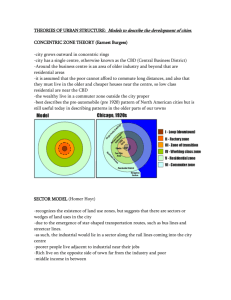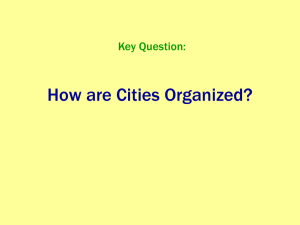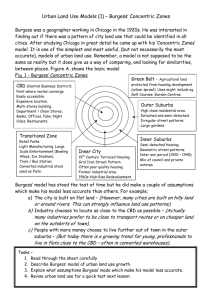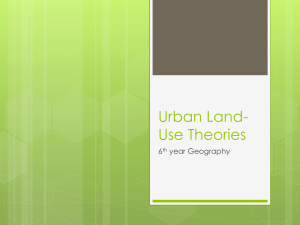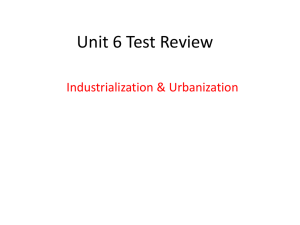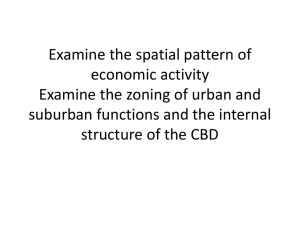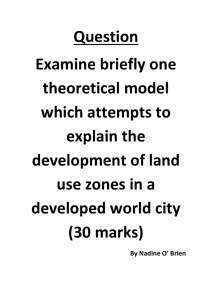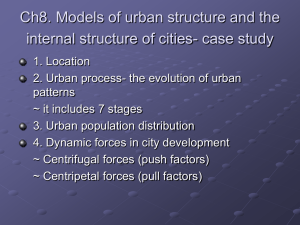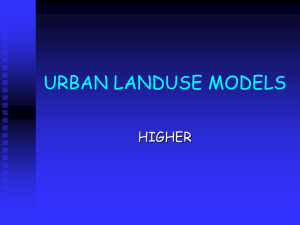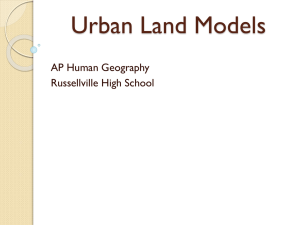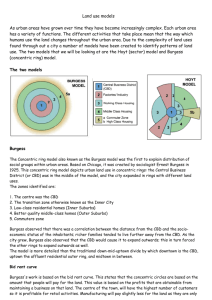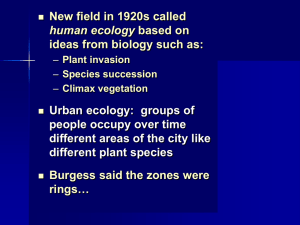Urban Morphology - Mrs. Watson`s Class
advertisement
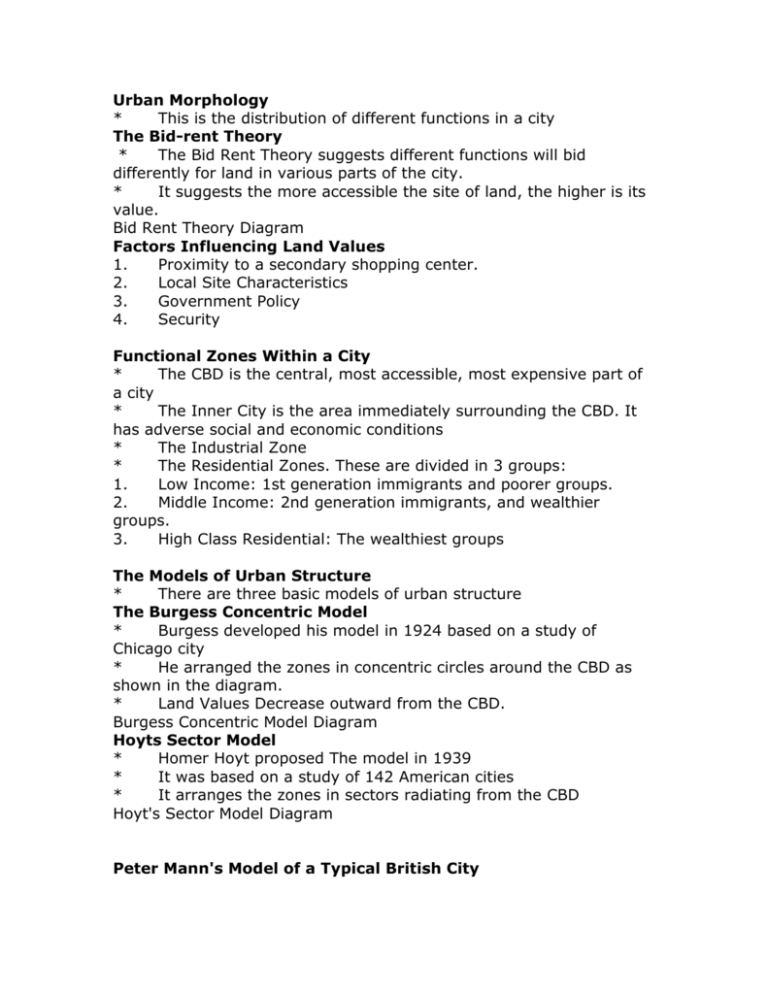
Urban Morphology * This is the distribution of different functions in a city The Bid-rent Theory * The Bid Rent Theory suggests different functions will bid differently for land in various parts of the city. * It suggests the more accessible the site of land, the higher is its value. Bid Rent Theory Diagram Factors Influencing Land Values 1. Proximity to a secondary shopping center. 2. Local Site Characteristics 3. Government Policy 4. Security Functional Zones Within a City * The CBD is the central, most accessible, most expensive part of a city * The Inner City is the area immediately surrounding the CBD. It has adverse social and economic conditions * The Industrial Zone * The Residential Zones. These are divided in 3 groups: 1. Low Income: 1st generation immigrants and poorer groups. 2. Middle Income: 2nd generation immigrants, and wealthier groups. 3. High Class Residential: The wealthiest groups The Models of Urban Structure * There are three basic models of urban structure The Burgess Concentric Model * Burgess developed his model in 1924 based on a study of Chicago city * He arranged the zones in concentric circles around the CBD as shown in the diagram. * Land Values Decrease outward from the CBD. Burgess Concentric Model Diagram Hoyts Sector Model * Homer Hoyt proposed The model in 1939 * It was based on a study of 142 American cities * It arranges the zones in sectors radiating from the CBD Hoyt's Sector Model Diagram Peter Mann's Model of a Typical British City * Peter Mann took Hoyt's and Burgess's models and combined them in his model of a typical British City in 1965. * He based his model on studies of Sheffield, Nottingham and Huddersfield. The Multi-Nuclei Theory * This theory was proposed by Ullmann and Harris in 1945. * It suggests that a city may have more than one nuclei/center apart from the CBD from which zones develop as shown in the diagram. Multi Nuclei Theory Diagram The Urban Field * The Urban field is the region economically and socially linked to a city. * It is also referred to as * Urban Regions:The commuter villages/communities dependent on large towns * Functional Regions:The regions to/from which a city exports and imports. * Hinterland:The area served by a seaport
